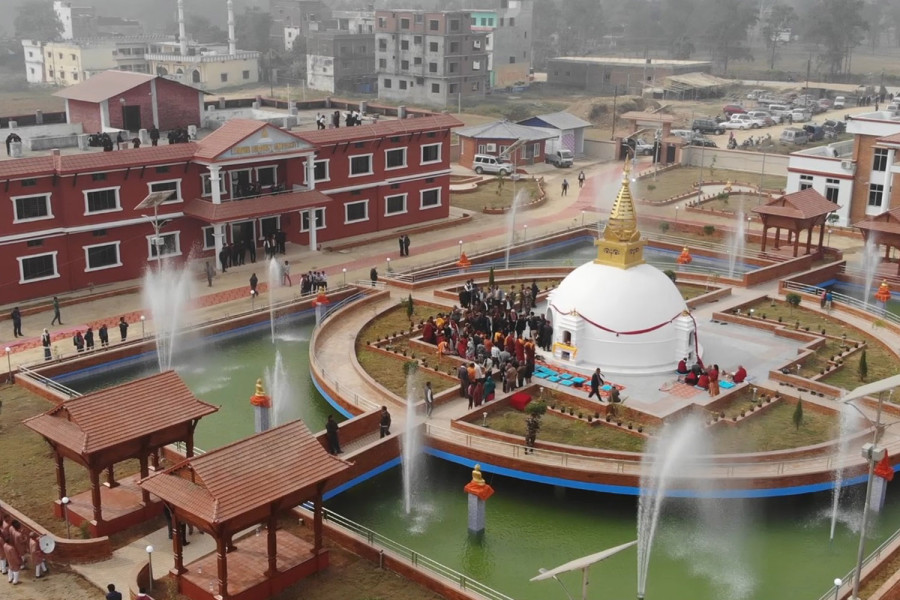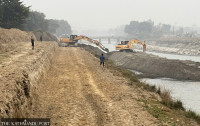National
Struggles of Nepal’s new universities
Task force suggests new varsities be brought into operation only after needs assessment.
Binod Ghimire
As federal and provincial governments compete to set up new universities, a high-level task force has suggested that new universities should be added only after a needs assessment and by developing an objective criteria.
The taskforce led by Pushpa Raman Wagle, a member of the National Planning Commission, has also suggested that “the government formulate an umbrella law, which would set up a mechanism to make suggestions to the government on higher education, before adding new universities,” reads a point in the report submitted by the task force. “The universities and deemed universities established by the provinces have neither proper criteria nor monitoring mechanisms.”
The country had only six universities—Tribhuvan University, Mahendra Sanskrit University [currently Nepal Sanskrit University], Kathmandu University, Pokhara University, Lumbini Buddhist University and Purbanchal University–before the second people’s movement in 2006. With the larger goal of diversifying and decentralising higher education, the government in 2010 decided to establish three more universities—Far-Western University, Mid-Western University and the Agriculture and Forestry University (AFU)—across the nation.
They were followed by two more—Nepal Open University and Rajarshi Janak University—taking the total to 11. The last parliament also gave a go-ahead for Madan Bhandari University of Science and Technology and Yogmaya Vidushi Ayurveda University by endorsing their Acts. In addition to 13 central universities and six academies of health sciences, which are also considered deemed universities, the provincial governments too are competing in the establishment of new universities and health sciences academies. Gandaki Provincial University, Madhesh Agriculture University and Madhesh University are already in operation, while Province 1 has endorsed a law to set up Manmohan Industrial University. Lumbini Technological University too is in the offing.
Similarly, Madhesh Academy of Health Sciences and Madan Bhandari Academy of Health Sciences are in the pipeline. In addition, a separate National Defence University is on course to operate.
Education experts said there is no doubt that the country needs more universities. However, there should be proper planning and study of what sort of university the country needs before taking a decision to add new ones. “New universities are being set up haphazardly—without any study and planning. Often the University Grants Commission, a statutory body that aims to promote, facilitate, support, and enhance the quality of higher education in Nepal, is kept in the dark about the plans to launch these new universities,” Dev Raj Adhikari, former member secretary at the University Grants Commission, told the Post. He said the focus should instead be on improving the performance of existing universities.
For instance, the Lumbini Buddhist University that came into operation in 2004 is struggling to enrol students—just 823 got enrolled in 2021. The state of Nepal Sanskrit University is no better. The country’s second-oldest university has around 2,500 students.
The new universities were conceived to decrease overdependence on Tribhuvan University for higher education. However, the oldest university still has close to 80 percent of the total student share as the newly opened universities are not faring well—they haven’t been able to introduce new courses and their teaching-learning is no different to that of Tribhuvan University. “The country definitely needs new universities, but they don’t have to be a carbon-copy of Tribhuvan University,” said Pramod Bhatta, a researcher at Martin Chautari, adding that most new universities have failed to prove their worth in terms of courses and quality of education.
He said the new universities’ leaderships, from vice-chancellors to rectors, are deputed from the Tribhuvan University and the courses are also designed by its teachers. “We need universities that focus on liberal education and science and technology,” said Bhatta. “We might also need specialised universities like the Indian Institute of Technology in India.”
Currently, most universities offer a similar type of education and the pedagogy too is no different. The Wagle-led task force says the University Grants Commission needs to be restructured just as the Higher Level Education Commission for quality assurance and better coordination.




 10.12°C Kathmandu
10.12°C Kathmandu















